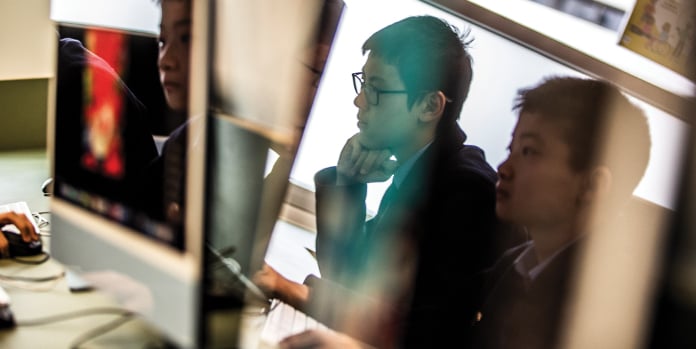With the introduction of an additional visual arts subject – Design – at Wadhurst, our Year 7 students are gaining skills that will support future study and encourage more conscious interactions with the digital world.
“We’ve created this subject to formalise the study of digital art within our creative arts curriculum,” explains Wadhurst Visual Arts Coordinator Sam Sharpe. “It’s a hybrid of visual communication design – also referred to as graphic design – and media, and it recognises that while traditional art making skills are still a vital part of what we teach in our other visual arts subjects, our students are now learning in a digital-first world.”
From first-time designers to documentary makers
With a new Mac lab to support their studies, our Year 7 students are examining how brand identities are created, analysing digital imagery, using tools such as Adobe Illustrator and Photoshop to create products based on client briefs, and taking on their first video projects.
“By creating very short videos, students learn the basics of lighting, sound, editing, and special effects,” Sam explains. “This leads up to their end-of-year project, where they’ll create their own short documentary film.”
Along with building new technical skills, Sam says working on design projects such as these also enhances students’ ability to work in a group, and to consider whether their creations meet the needs of others.
“Because our design projects are based on a client brief, our students learn how to factor in other people’s requirements,” Sam says. “We extend all these skills in our Year 8 design elective, which is focused on environmental design. And, if students choose to study design and media subjects at Senior School level, they’ll already have the basic technical knowledge they need.”
Becoming active, aware consumers
By studying all these aspects of visual design, young students have the opportunity to learn how they might be influenced to take action based on advertising and other digital content.
“They come to see how images can be manipulated, and how the way a piece of information is presented might be aimed at getting them to take an action,” Sam says. “By learning how this content is actually created, they’re going from passive consumers to people who are aware of how the media influences them.”
“As with all our visual art subjects, design teaches students that creativity involves various stages,” Sam adds. “They understand that there’s a process, from getting that first idea, to trying out different methods, and eventually creating a final product.”



